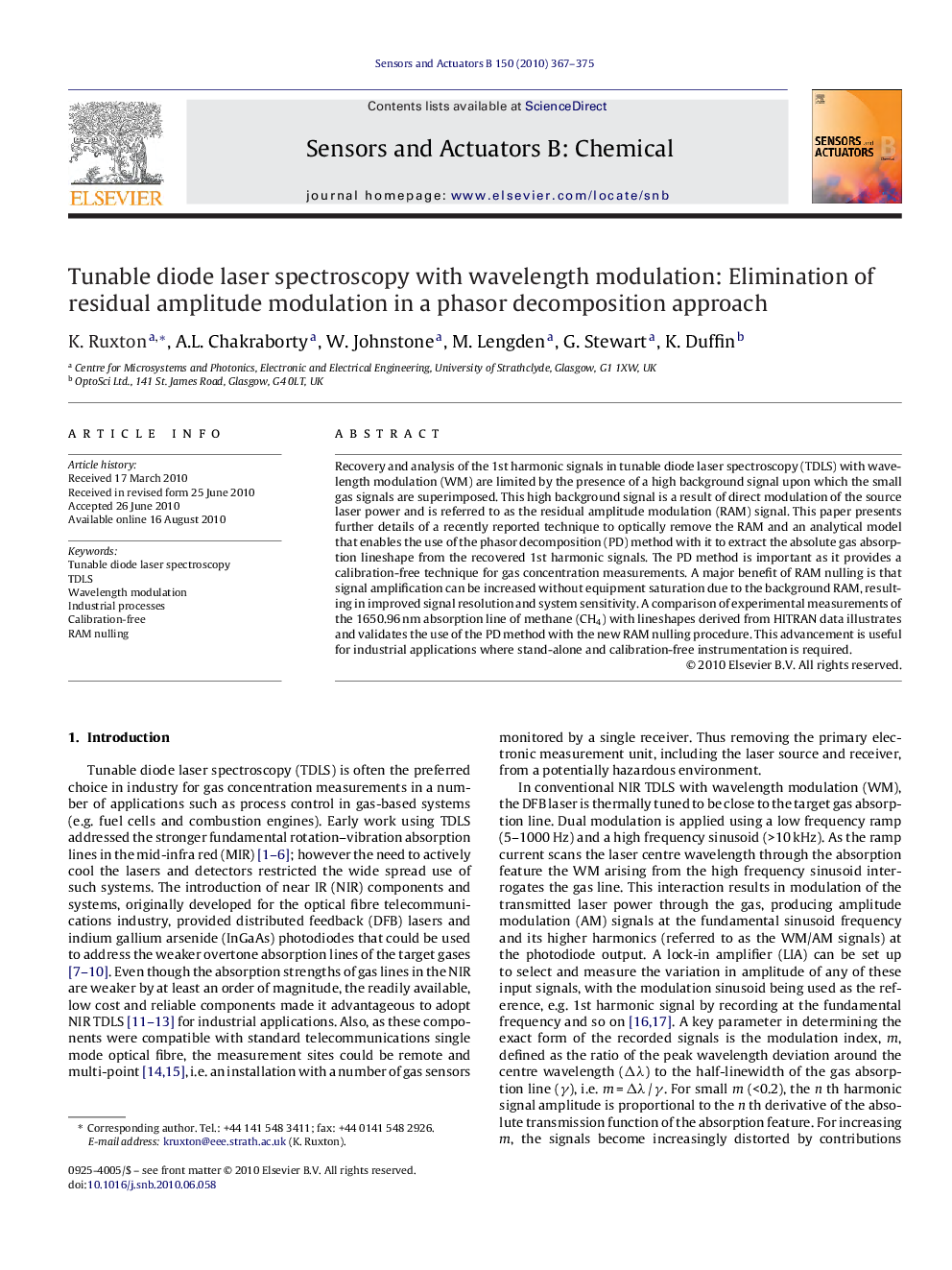| Article ID | Journal | Published Year | Pages | File Type |
|---|---|---|---|---|
| 740981 | Sensors and Actuators B: Chemical | 2010 | 9 Pages |
Recovery and analysis of the 1st harmonic signals in tunable diode laser spectroscopy (TDLS) with wavelength modulation (WM) are limited by the presence of a high background signal upon which the small gas signals are superimposed. This high background signal is a result of direct modulation of the source laser power and is referred to as the residual amplitude modulation (RAM) signal. This paper presents further details of a recently reported technique to optically remove the RAM and an analytical model that enables the use of the phasor decomposition (PD) method with it to extract the absolute gas absorption lineshape from the recovered 1st harmonic signals. The PD method is important as it provides a calibration-free technique for gas concentration measurements. A major benefit of RAM nulling is that signal amplification can be increased without equipment saturation due to the background RAM, resulting in improved signal resolution and system sensitivity. A comparison of experimental measurements of the 1650.96 nm absorption line of methane (CH4) with lineshapes derived from HITRAN data illustrates and validates the use of the PD method with the new RAM nulling procedure. This advancement is useful for industrial applications where stand-alone and calibration-free instrumentation is required.
